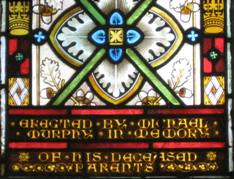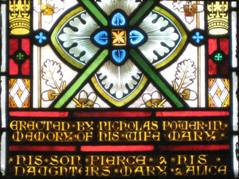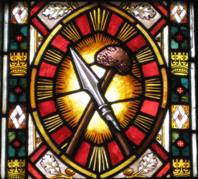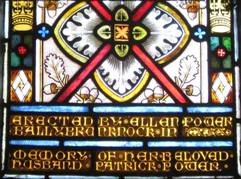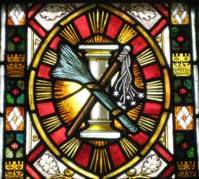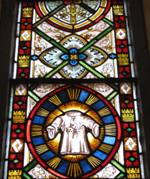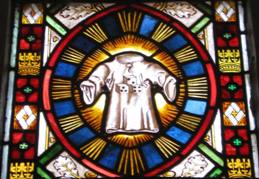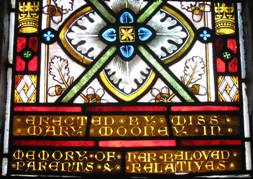The tenth nave window
The main detail in this window shows a crown of thorns and three nails. The thorns were used when Jesus was delivered to the Roman soldiers for crucifixion –
“And they stripped him and put a scarlet robe on him and, twisting together a crown of thorns, they put it on his head and put a reed in his right hand. And kneeling before him, they mocked him, saying, ‘Hail, King of the Jews!'” [Matthew 27:28,29].
The nails or spikes were of square section, about 15 to 20 centimetres (six or seven inches) long and made of iron. Three were used to nail Jesus to the cross – one nail through each wrist and one for the feet which were nailed together. The feet were not nailed as depicted in religious art but were turned outward and the nail was driven through the two heels, just in front of the Achilles tendons.
The dedication at the bottom of the window is shown in the image at far right and reads,
MURPHY IN MEMORY
PARENTS



